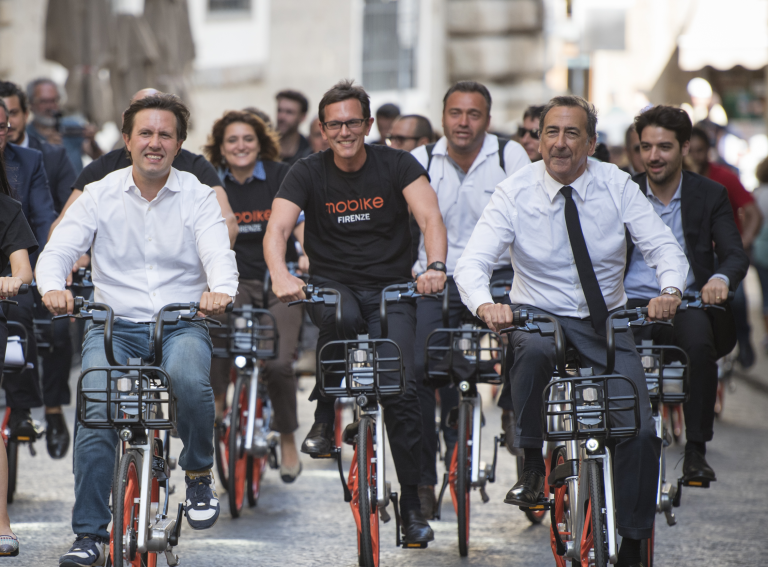The OUI is a new type of light electric vehicle designed for a world without cars.
An electric Mini Mobility concept that is unique in more ways than one, the OUI weighs in at just 500kg and is limited to 45km/h (28mph, L6 category). What’s more, it is the first vehicle of its kind to include four seats, allowing entire families to travel at once with space for cargo storage.
The OUI was the joint creation of architect Barend Koolhaas, who opened his own firm in 2011, and new mobility design studio Springtime Design, co-founded by Marcel Schreuder almost 30 years ago.
Based in Amsterdam, the pair believe that a multidisciplinary approach is required in the search for solutions to the problems that face modern urban areas. The combination of architectural and design skills is evident in the OUI’s development, but further collaboration is needed to achieve a future where pedestrians, cyclists and road users are able to coexist safely.
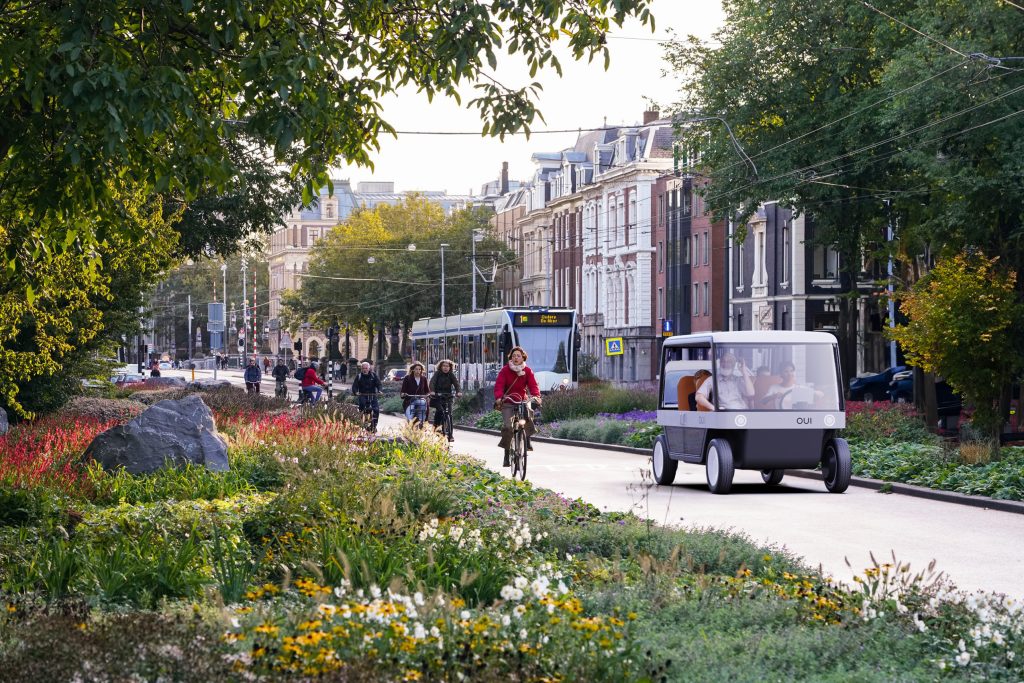
Built around a shared model, the partners have developed a range of subscription and rental models that aim to maximise the availability and accessibility of sustainable travel, with the OUI operating alongside existing new mobility innovations.
“There is not one vehicle that is going to solve everything magically,” Koolhaas tells Zag Daily.
“It’s a multifaceted problem that requires many different solutions, and the OUI can be one part of that process.”
The problem is cars
Currently, privately-owned cars present urban planners with a number of issues. They are parked 95% of the time, while the majority of journeys they do take are very short and could be conducted using a lighter form of transport.
In addition, they contribute 15% of the greenhouse gas emissions produced across Europe and result in the death of 1.3 million people around the world each year due to accidents.
However, people remain heavily reliant on cars in their day-to-day lives, which is why Koolhaas believes the OUI is well-placed to “help bridge the gap between a car and a bicycle”.
“For too long cars have determined the way we use our streets,” he says.
“What if we let the design of green, healthy, and social streets determine what our mobility systems look like? The OUI was born out of this vision.”
The partners took a top-down approach in the development of the new Mini Mobility concept, envisioning a city that is more usable for people and then finding a way to catalyse the necessary changes.
“Normally people develop new solutions based on the existing market conditions,” explains Schreuder.
“In this case we wanted to take a different approach, understand what is missing from urban areas and create with that goal in mind.”
Meanwhile, Koolhaas’ background in architecture allowed the partners to incorporate concepts of open architecture during the development of the OUI.
“In the same way that old factories or school buildings can be repurposed, we think about the architecture of the vehicle in a similar way,” he continues.
“The OUI has a very long lifetime, but its individual parts will not last as long due to constant usage. This is a modular design approach that we don’t see much with cars or other vehicles, and it only adds to the concept’s sustainable credentials.”
Setting the OUI apart
A core advantage of the OUI is how it allows people to switch between modalities while travelling around an urban area. Switching between walking and cycling is currently possible, but this is not suitable for families or people with mobility issues.
“To make a successful transition from cars, some users will still require a covered vehicle,” explains Schreuder.
“The OUI is a multifunctional vehicle that combines minimal impact with maximum practicality and flexibility. It is designed to share the street with pedestrians and bicycles; very accessible and open.”
On the ability for the OUI to store shopping or luggage, Koolhaas adds: “This makes it very flexible and distinguishes it from other solutions.”
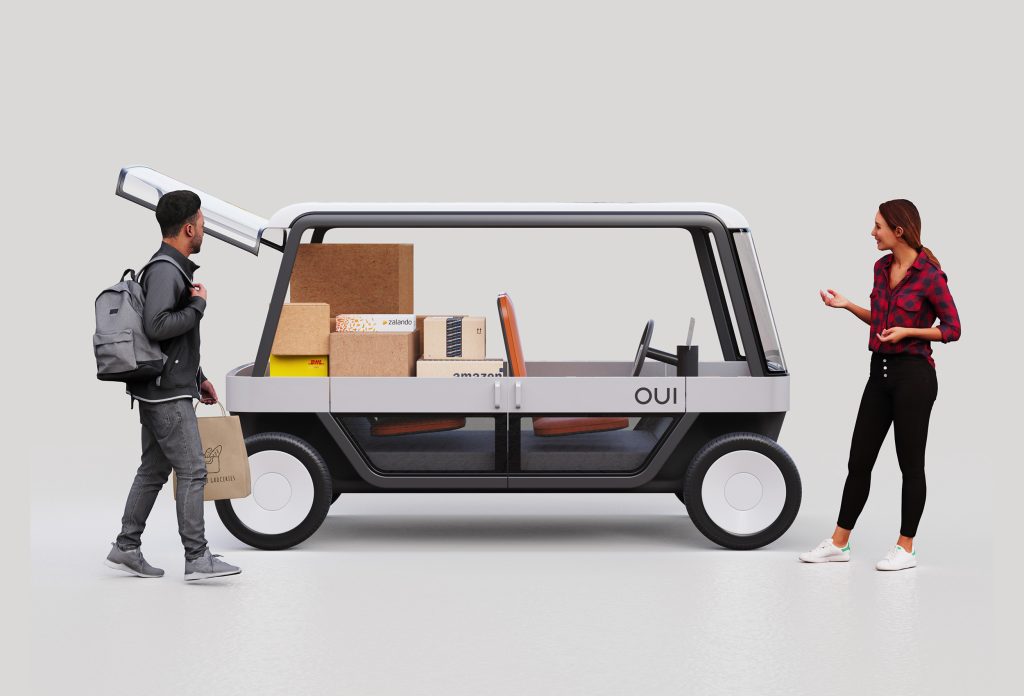
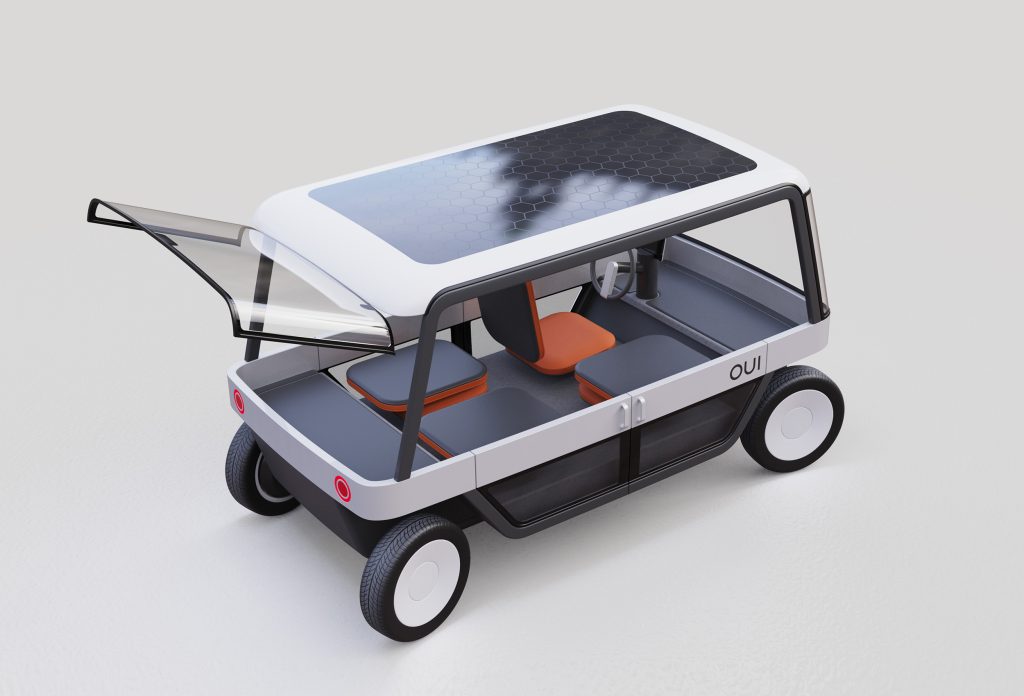
Such a feature separates the Mini Mobility concept from e-scooters, e-bikes and cargo bikes, new mobility modes of transport that Koolhaas and Schreuders want to co-exist alongside the OUI.
The concept has also been developed through the lens of creating a shared vehicle, distinguishing it from other LEVs on the market. It is lightweight, making it more energy efficient, while it can be used by four people at once.
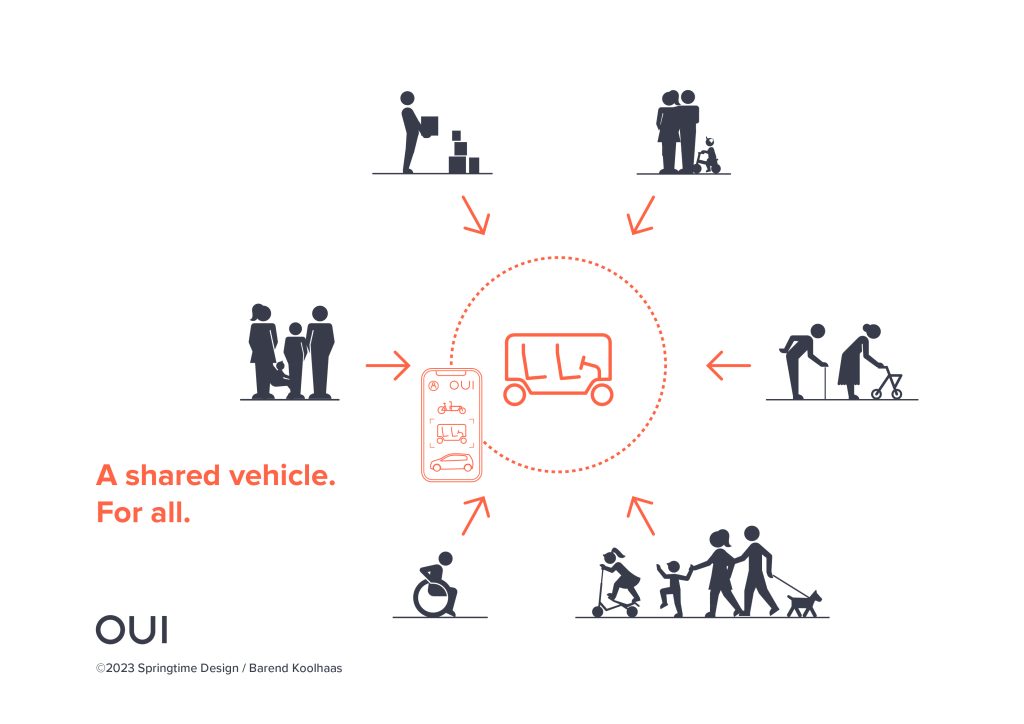
“We believed that shared vehicles should be designed differently from scratch,” Schreuder says.
“We want the OUI to be accessible and universal. Most car design relates to status, speed, and power and freedom. The OUI is in many ways the opposite – it is about practical use, about connecting to your surroundings, about simplicity. It is still about freedom but in a new way (for everyone, not just you!)”
The partners are passionate about how the OUI is different to a car, and the light vehicle’s configuration reflects that well.
“We want its identity to reference furniture or interior design, combining simplicity and functionality,” Koolhaas adds.
“It should be about fun and the relationship you have with your surroundings.”
Words into action
The next stage in the OUI’s journey is set to begin this Autumn when the partners showcase the concept at events including IAA Mobility, Dutch Design Week and the Salone del Mobile in Milan.
This will allow Koolhaas and Schreuder to gauge the reaction and take on feedback as they move towards commercial launch. The partners hope to actively collaborate with other stakeholders in the new mobility industry and in the future work with city planners, mobility providers and manufacturers.
“As a first milestone we plan to build a full scale mock-up of the OUI and demonstrate it at both mobility and design events,” Schreuder explains.
“We are looking for both investors and stakeholders in sustainable mobility to partner with us in launching a promising experiment that will generate ideas and insights.”
The OUI is a new type of vehicle that promises to disrupt and enhance the new mobility landscape, providing added momentum to a movement committed to altering the way that cities and urban spaces operate.




